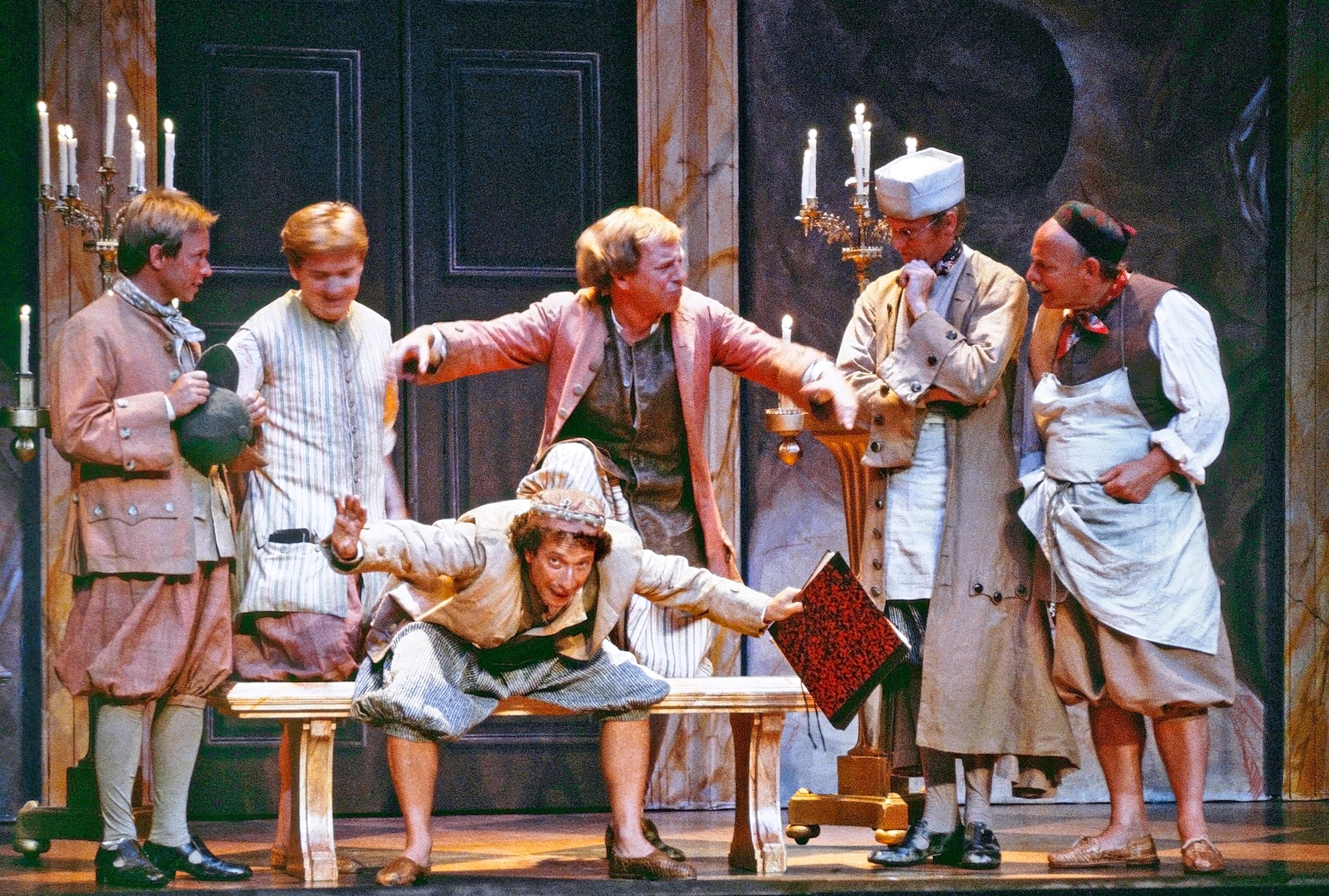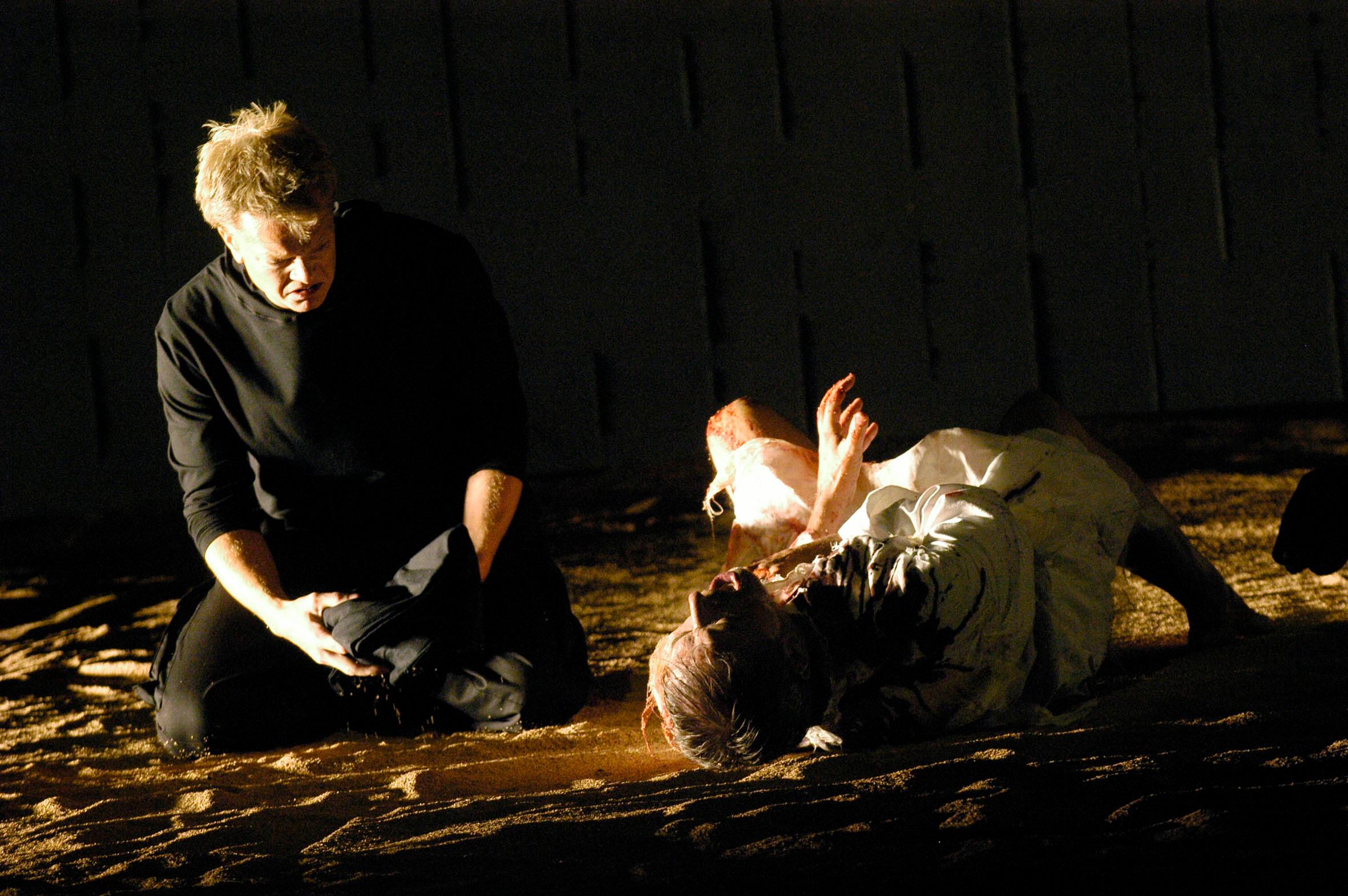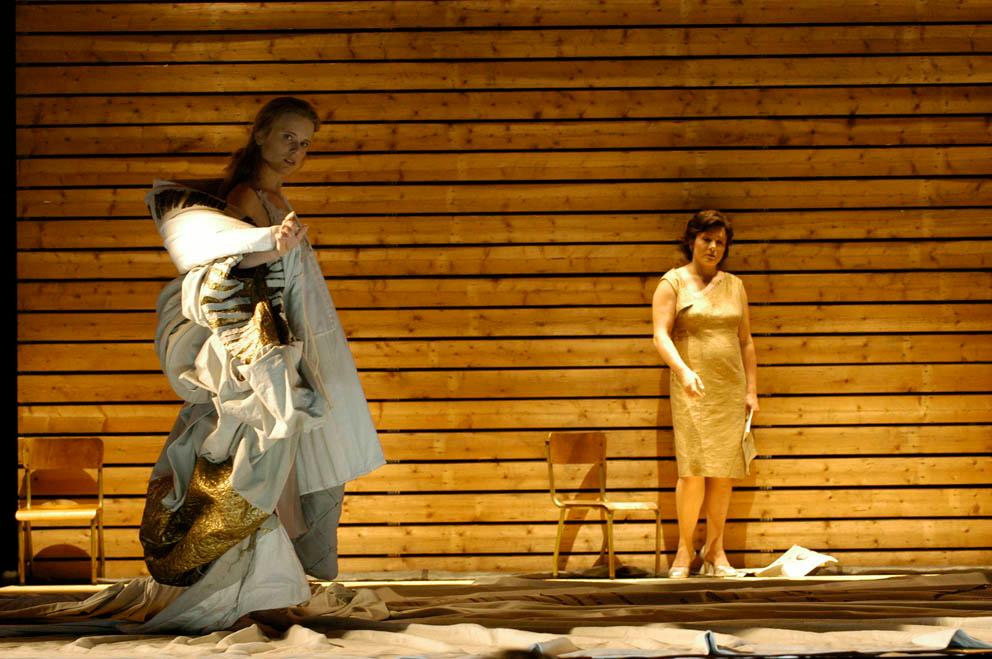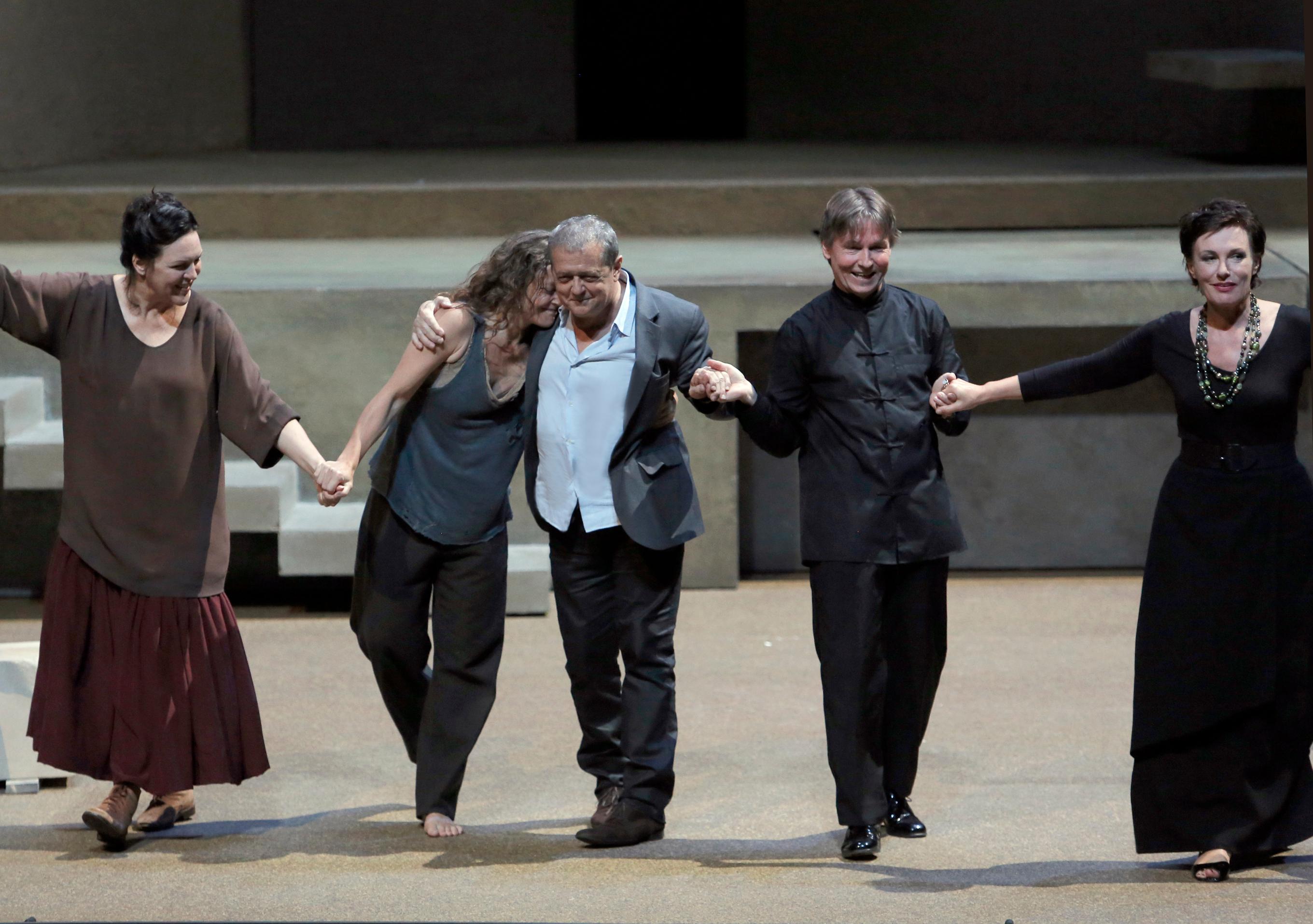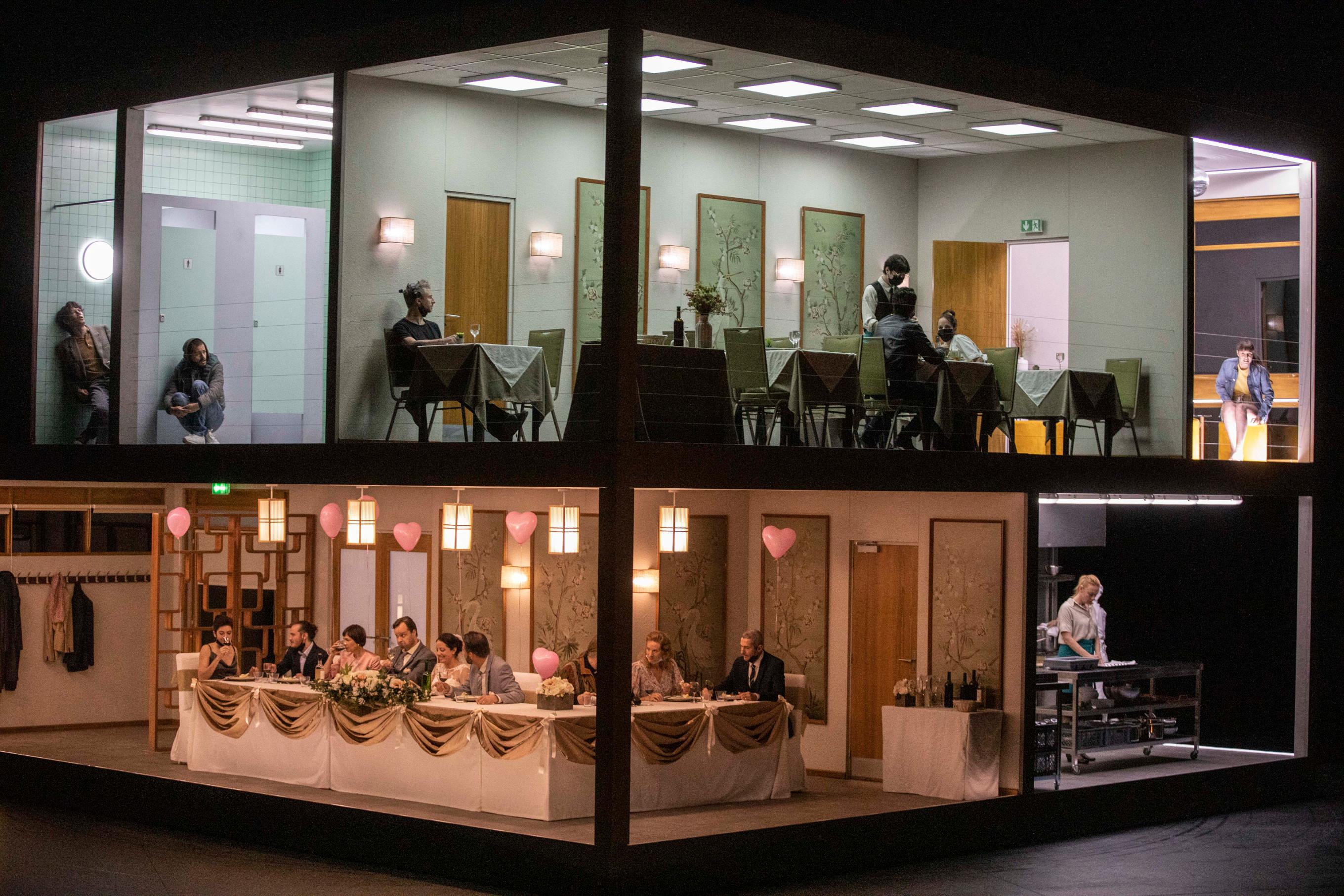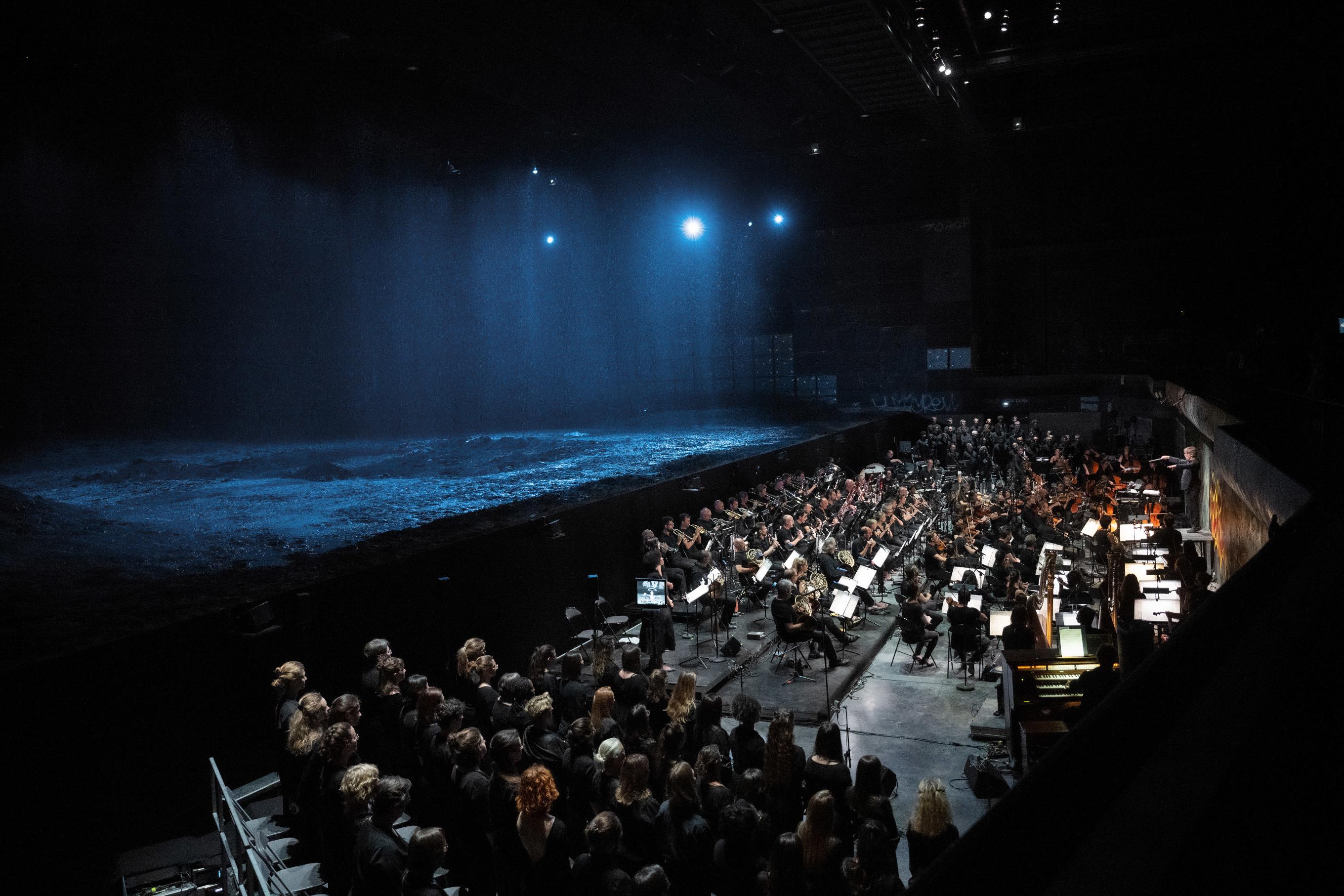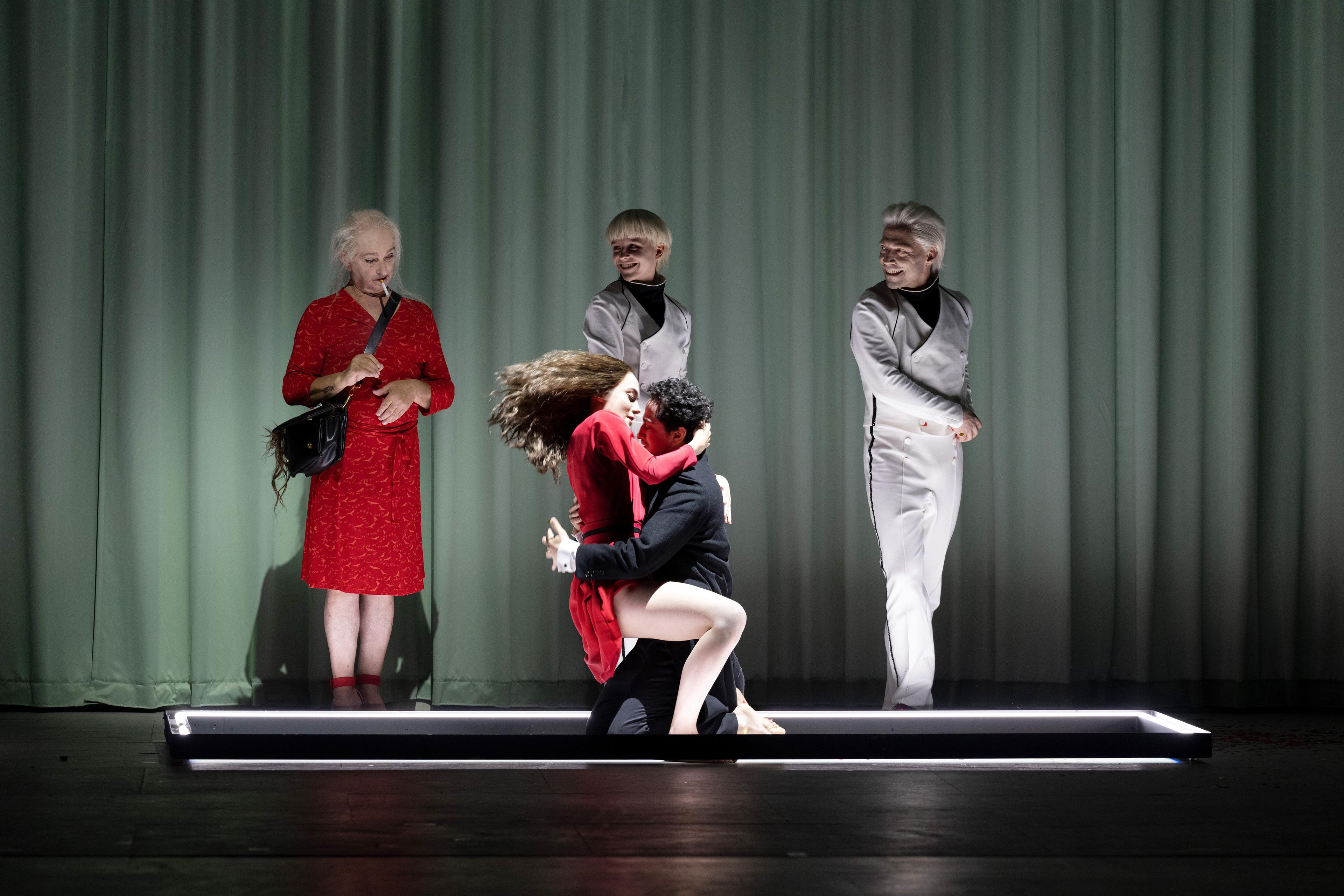History of the Festival
At the start > 1948
At the start > 1948
At the start > 1948
At the start > 1948
The post-war period was a fertile ground for artistic revival and the development of festivals. Cinema and theatre were celebrated with the creation of a major international event dedicated to each of them: the Cannes Film Festival and the Festival d’Avignon, founded in 1946 and 1947 respectively. In this same spirit, the Festival d’Aix was launched in the summer of 1948.
The Aix adventure is closely linked to the figure of Gabriel Dussurget and the mythology surrounding him, just as the Festival d’Avignon is with Jean Vilar. A Parisian impresario, co-founder of the Ballet des Champs-Elysées, along with Boris Kochno and Roland Petit (1945), and future artistic advisor to the Paris Opera under Georges Auric, G. Dussurget recruited a team of passionate men and women to join him in Aix-en-Provence, thus enabling a major European opera venue to emerge.
During the war, Countess Lily Pastré, a patron of the arts and member of the Marseille bourgeoisie, founded the association ‘Pour que l’esprit vive’ (‘So that the spirit may live’): she invited Jewish artists to Montredon and sheltered them there at her bastide, which became a refuge for musicians, painters and writers in flight on their quest to reach the free zone. In 1947, Gabriel Dussurget met the Countess. With her help and connections, he managed to realise a project he had been nurturing for several years, one inspired by his travels across Europe, and in particular his visit to Salzburg: a ‘Mozart Festival’.
Gabriel Dussurget fell under the spell of Aix-en-Provence and the courtyard of the Archevêché (Archbishop’s Palace), where he envisioned holding the festival. By partnering with the Casino Municipal d’Aix Thermal, he made his musical dream a reality the following summer. In 1948, the courtyard — a former centre of the archiepiscopal complex of Aix-en-Provence, transformed into a public garden in the twentieth century — became the main venue for Aix’s musical festivities.
The director of the Société du Casino d’Aix Thermal, Roger Bigonnet, worked towards the success of this first edition of the ‘Mozart Festival’ in July 1948. Numerous concerts and recitals were held in the courtyard of the former Archevêché, in the Jas-de-Bouffan, in the Musée des Tapisseries, and in other locations throughout Aix-en-Provence, and featured such performers as the Romanian pianist Clara Haskil.
Alongside these concerts, an opera was staged: Mozart’s Così fan tutte. The work, whose last performance in France dated back to 1926 at the Opéra-Comique, was unfamiliar to the French public. Gabriel Dussurget engaged actress Marisa Morel’s troupe to perform, commissioned painter Georges Wakhévitch to create a small backdrop for the stage, and managed to recruit Hans Rosbaud, conductor of the Südwestfunk in Baden-Baden, to lead the Orchestre des Cadets du Conservatoire.
I THINK THAT THE POWER OF THIS FIRST PERFORMANCE AT AIX WAS THAT IT WAS A SUCCESS, DISPLAYING GREAT TASTE AND FINE MUSICAL QUALITY, BUT A PERFORMANCE BY AMATEURS.
Edmonde Charles-Roux
Gabriel Dussurget interviewed by Ève Ruggieri in Aix-en-Provence, 22 July 1992 (INA)
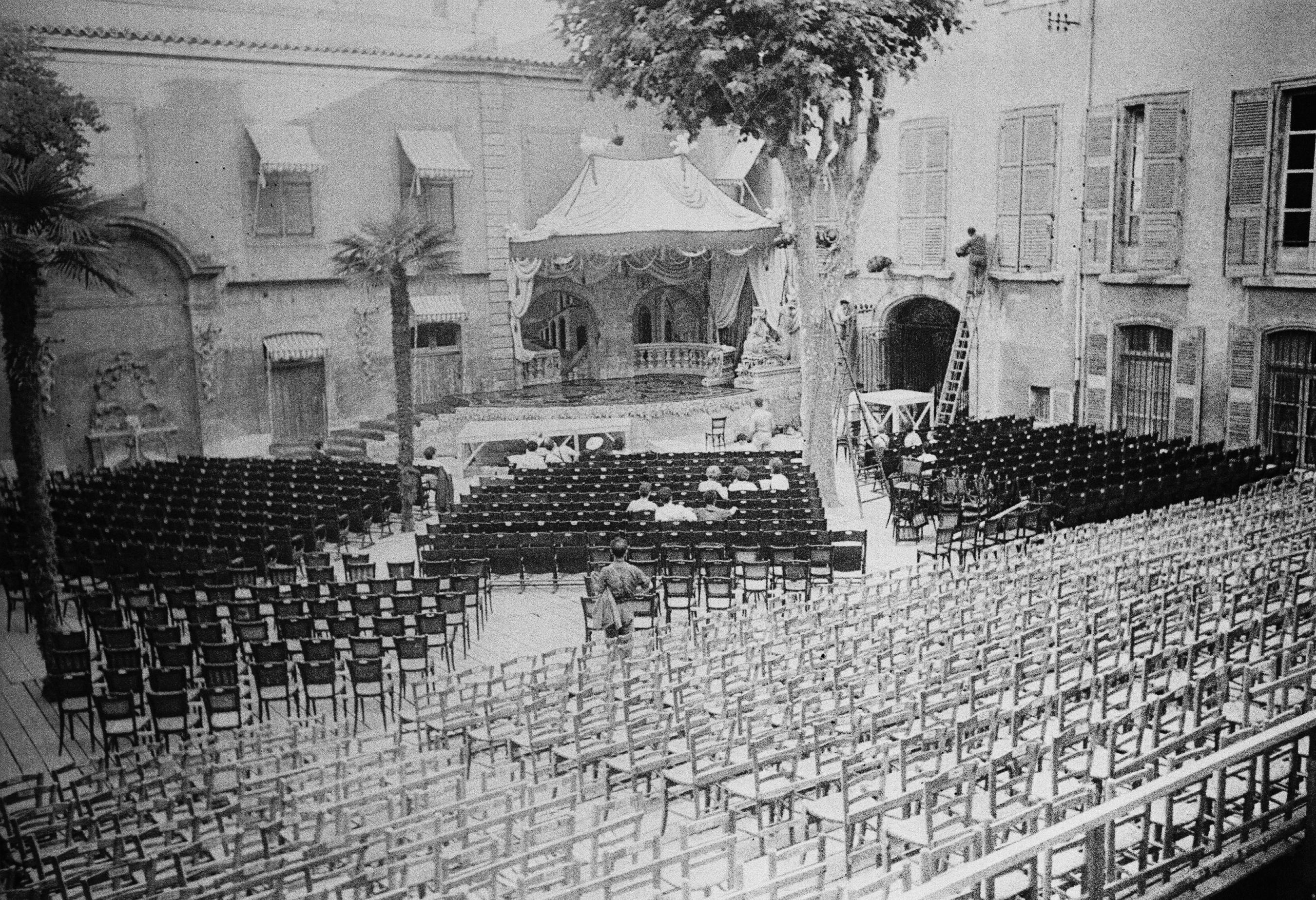
Cour du Théâtre de l'Archevêché © Henry Ely - Aix

Pelléas et Mélisande, 1966 © Henry Ely
1949 > 1973
1949 > 1973
1949 > 1973
1949 > 1973
The Festival’s phenomenal, and instantly international, success led to a second edition in 1949. This time, it was the painter Cassandre who designed the sets for the new Mozart production, Don Giovanni, as well as the theatre that was installed inside the Cour de l’Archevêché. The theatre remained in use until the early 1970s.
The Casino d’Aix-en-Provence supported the development of the Festival, and acted as the organising body for the operas and concerts. Roger Bigonnet and, as of the mid-1960s, Jean Bertrand were the directors of both the gaming establishment and the opera event, while Gabriel Dussurget assumed the role of artistic director. Edmonde Charles-Roux was responsible for press relations; and Hans Rosbaud became the principal musical director, leading the Orchestre de la Société des Concerts du Conservatoire.
This period was marked by the fundamental magic behind the Festival’s spirit, which allowed Aix-en-Provence to transform into a ‘French Salzburg’, with a creative environment in which a joyful, ‘Mediterranean’ Mozart was reimagined amidst incomparable artistic and intellectual collaboration. It was the era of the ‘Don Juan under the stars’ — as François Mauriac famously called it, in reference to the 1949 production of Don Giovanni — during which numerous musicologists, academics and international opera-lovers flocked to Aix.
These first twenty-five years set a decisive tone and artistic direction for the Festival, with a focus on Mozart, Baroque music, contemporary creation, and vocalisation. Originally named the ‘Mozart Festival’, the event took on the title of the ‘International Music Festival of Aix-en-Provence’ in 1949. An entire musical avant-garde gathered in Aix, including Les Six; a young Pierre Boulez, who presented his Marteau sans maître (1955); and Henri Dutilleux, who gave the first public performance of his First Symphony (1952) and premiered his cello concerto at the Archevêché, with Mstislav Rostropovich (1970). Maurice Le Roux presented Le Cercle des métamorphoses (1953), under the baton of Ernst Bour; and Olivier Messiaen offered the European premiere of the Turangalîla-Symphonie (1950). Poulenc’s Piano Concerto was heard there for the first time in France, as was the Italian quartet I Musici, pioneers in the rediscovery of Baroque music. In addition, many prestigious conductors were invited: Herbert von Karajan conducted concerts in Les Baux-de-Provence (1954) and Berlioz’s Symphonie Fantastique at the Archevêché (1969), while Hans Rosbaud, Serge Baudo, and Carlo Maria Giulini were regular Festival figures.
The Cour de l’Archevêché became a privileged stage for Mozart productions: at the time, Aix-en-Provence was the only place in France where the composer’s works could be heard in their entirety and in their original language. The Festival d’Aix developed into a place of permanent creation around an expanding Mozartian canon: the four founding titles — Così fan tutte (1948), Don Giovanni (1949), Die Entführung aus dem Serail (1951) and Le Nozze di Figaro (1952) — would later be joined by Die Zauberflöte (1958) and Idomeneo (1963). To complement these operas, Il Barbiere di Siviglia (Rossini), with sets by André Derain, quickly found its place among the regularly performed works.
In addition, the programme honoured Baroque music several years before the widespread rediscovery of this repertoire. Gabriel Dussurget programmed works by Monteverdi, beginning with L’Orfeo (in concert version in 1950), L’incoronazione di Poppea (1961) and Il Combattimento di Tancredi e Clorinda (1967, choreographed by Pierre Lacotte), and others by Rameau — with a brilliant production of Platée in which tenor Michel Sénéchal excelled (1956) — Purcell (Dido and Aeneas, 1960) and Haydn (Il mondo della Luna, 1959, with sets by Denis Malclès).
The artistic and theatrical identity of the Festival was shaped primarily through the chemistry created with set designers. Influenced by the work of the Ballets Russes in Paris, Gabriel Dussurget made the Festival a melting pot of the performing arts by inviting renowned painters and visual artists: after Cassandre, the list of set designers for the operas at Aix included Balthus (Così fan tutte, 1950), André Derain (Die Entführung aus dem Serail, 1951), Antoni Clavé (Le Nozze di Figaro, 1952), François Ganeau (Carmen, 1957), André Masson (Iphigénie en Tauride, 1952), Suzanne Lalique (Dido and Aeneas, 1961), Pierre Clayette (Ariadne auf Naxos, 1963), Jacques Dupont (Pelléas et Mélisande, 1966) and Nathalie Gontcharova (Les noces, 1962).
In addition to these repertoire productions, the Festival also fostered a contemporary artistic heritage, and allotted considerable space for creation. In 1954, Les Caprices de Marianne (Henri Sauguet) was premiered there, as was Lavinia (Henri Barraud) in 1961. Local composers were celebrated: in 1962, Gabriel Dussurget programmed Les Malheurs d’Orphée, by Aix-born composer Darius Milhaud, and Béatrice de Planissolas, an opera in Occitan by Jacques Charpentier (1971). Provence, more broadly than the city of Aix, inspired the Festival, which spread in 1954 to Les Baux-de-Provence for performances of Gounod’s Mireille (a subject inspired by the work of Provençal poet Frédéric Mistral), and regularly to Tholonet, with its view of Montagne Sainte-Victoire, for numerous concerts and a production of Carmen staged by Jean-Pierre Grenier (1957).
Lastly, its ability to introduce great singers to audiences in Aix was another of the Festival’s virtues: Marcello Cortis, Graziella Sciutti, Renato Capecchi (the first performer in the title role of Don Giovanni), Mady Mesplé, Pilar Lorengar, José Van Dam, Régine Crespin (La Damnation de Faust, 1963), Rolando Panerai and Luigi Alva all united in the magnificent 1957 production of Così fan tutte, alongside the ‘two Teresas’ (Teresa Stich-Randall and Teresa Berganza), true stars of the Festival. In addition, Gabriel Bacquier performed in Don Giovanni, and played Golaud in Pelléas et Mélisande (1966) and the title role in Falstaff (1964), the first Verdi opera staged at the Festival. Finally, the very young Anja Silja played the Queen of the Night in the 1959 production of The Magic Flute.
In 1959, Gabriel Dussurget was appointed artistic advisor to Georges Auric at the Paris Opera; he held that position until 1972, the same year in which he resigned from his artistic functions at the Festival d’Aix, due to a tense relationship with the management team of the Casino Municipal. The French Ministry of Cultural Affairs supervised the musical programme for the 1973 edition and took firm control of the Festival’s organisation, with the aim of expanding its reputation and influence.
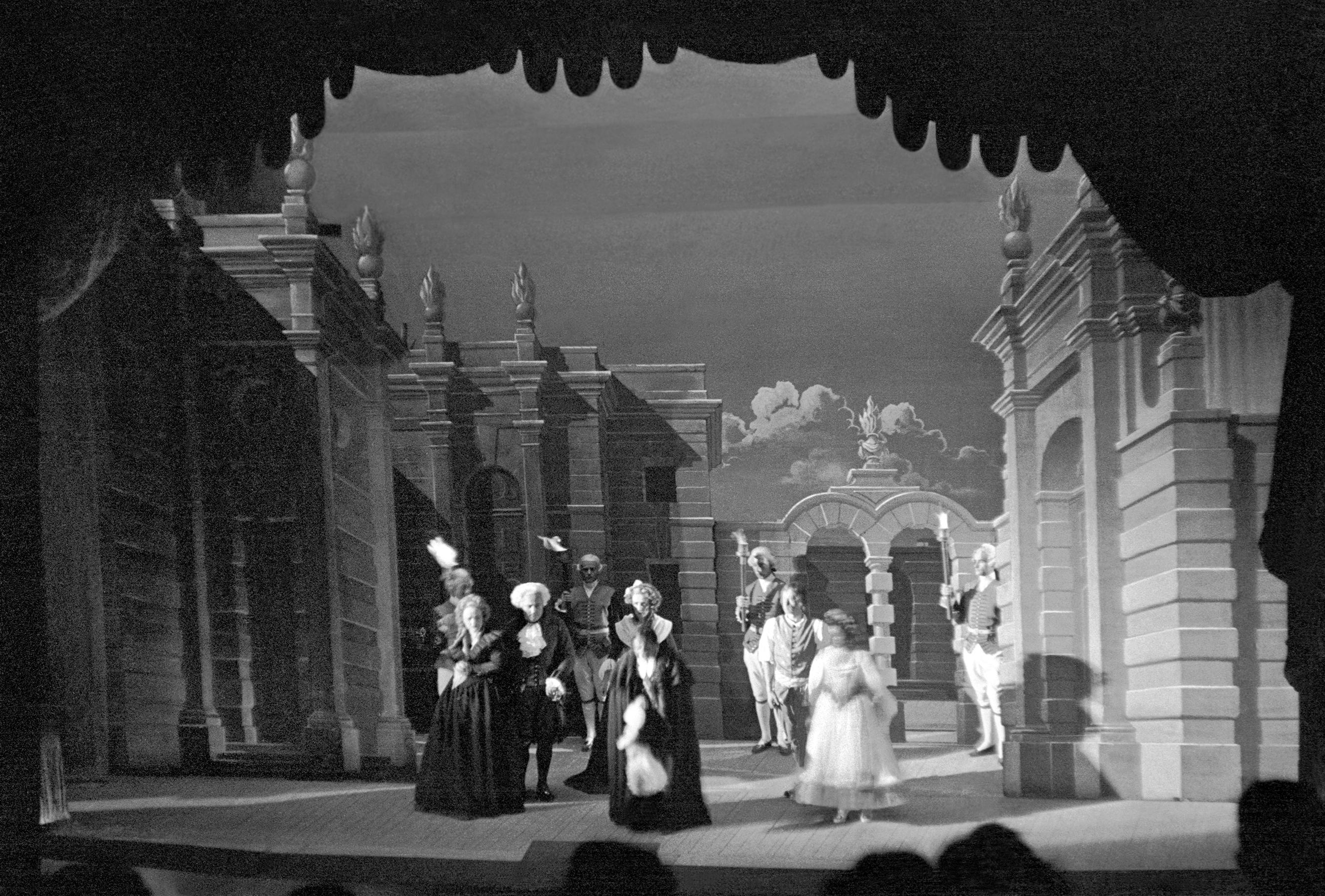
Don Giovanni, 1949 © Henry Ely
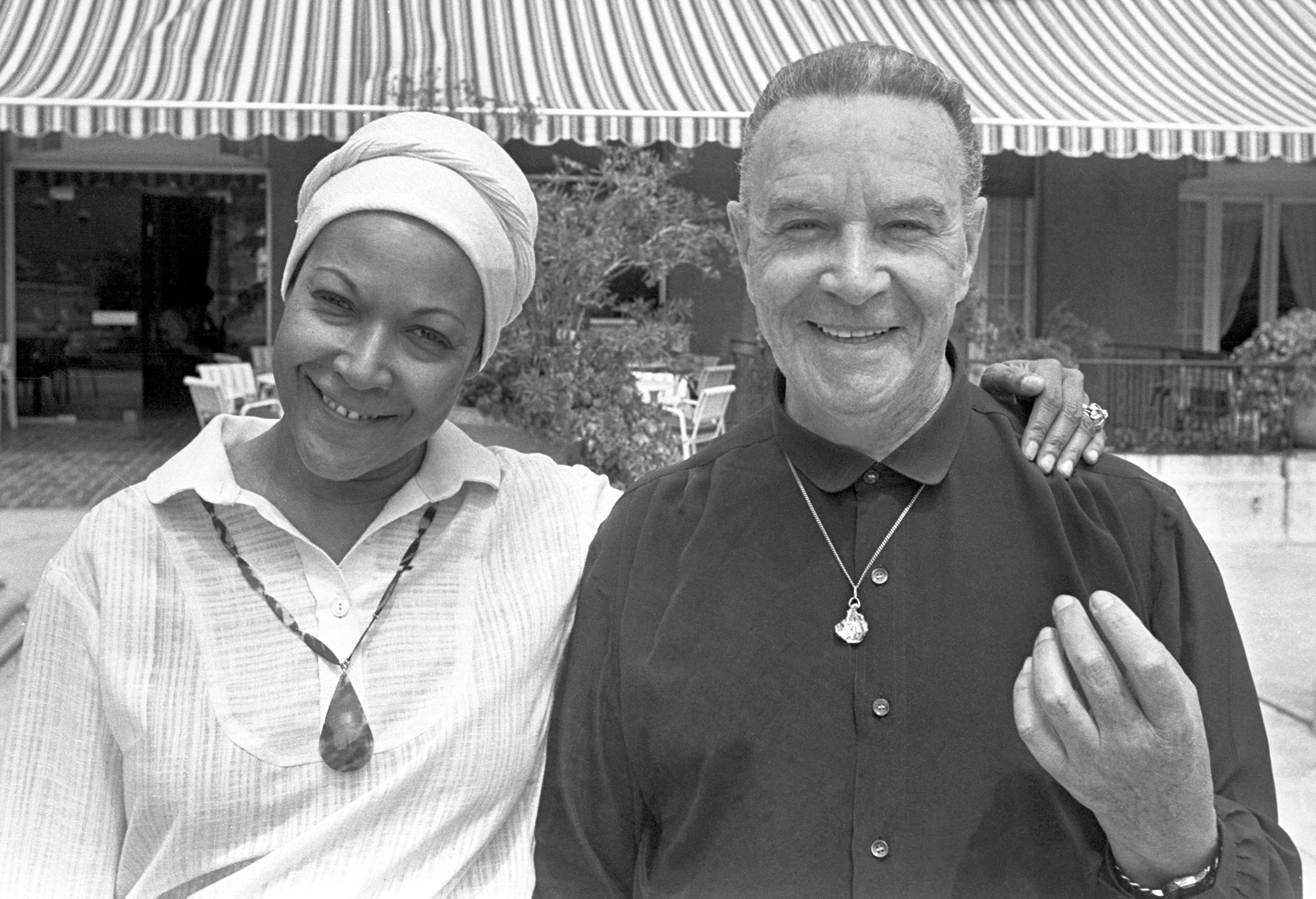
Gabriel Dussurget et Christiane Eda-Pierre, 1979 © Henry Ely
1974 > 1981
1974 > 1981
1974 > 1981
1974 > 1981
The Festival d’Aix entered a second chapter in 1974 with the arrival of Bernard Lefort as general director. The organisation was significantly restructured: the Casino Municipal became co-producer of the performances and concerts under the ‘Association pour l’organisation du Festival d’art lyrique d’Aix-en-Provence’, a structure run primarily by various regional authorities.
Bernard Lefort’s first edition marked an expansion of the repertoire, with a production of Verdi’s Luisa Miller. Although present for only seven seasons, B. Lefort, a baritone and former director of the Marseille Opera, introduced a repertoire drawn from bel canto, featuring both well-known works (e.g. Don Pasquale and L’Elisir d’amore) and lesser-known oeuvres, such as Donizetti’s Roberto Devereux in 1977. Several major productions left a memorable impression: Rossini’s Semiramis (1980), with a staging by Pier Luigi Pizzi, in which Montserrat Caballé and Marylin Horne formed a high-calibre duo; Massenet’s Werther (1979); and several operas staged by Jorge Lavelli, including La Traviata (1976) followed by Alcina (1978), in which Christiane Eda-Pierre and Teresa Berganza particularly shone.
Bernard Lefort transformed the Festival into a ‘celebration of singing’; every year, it awarded one singer the honorific ‘Golden Cicada’, of which Elisabeth Schwarzkopf was the first recipient, in 1974. As part of an effort to broaden accessibility and celebrate all types of voices, performers such as Ella Fitzgerald (1975) and Joan Baez (1977) gave large open-air concerts in the Place des Cardeurs. Finally, Bernard Lefort introduced a new concert format, the ‘Une heure avec’ (‘One Hour With’) recitals, held in the cloister of the Saint-Sauveur Cathedral, that showcased young artists or established stars: it was in this setting that pianist Hélène Grimaud made her debut, and that audiences became more acquainted with Baroque music through performances by James Bowman and Christophe Rousset.
In just a few editions, the Festival d’Aix had earned its place among the network of major international opera venues. However, the Théâtre de l’Archevêché was small, and thus restricted the size of potential audiences, despite the Festival’s desire to expand the number and the reach of its events.
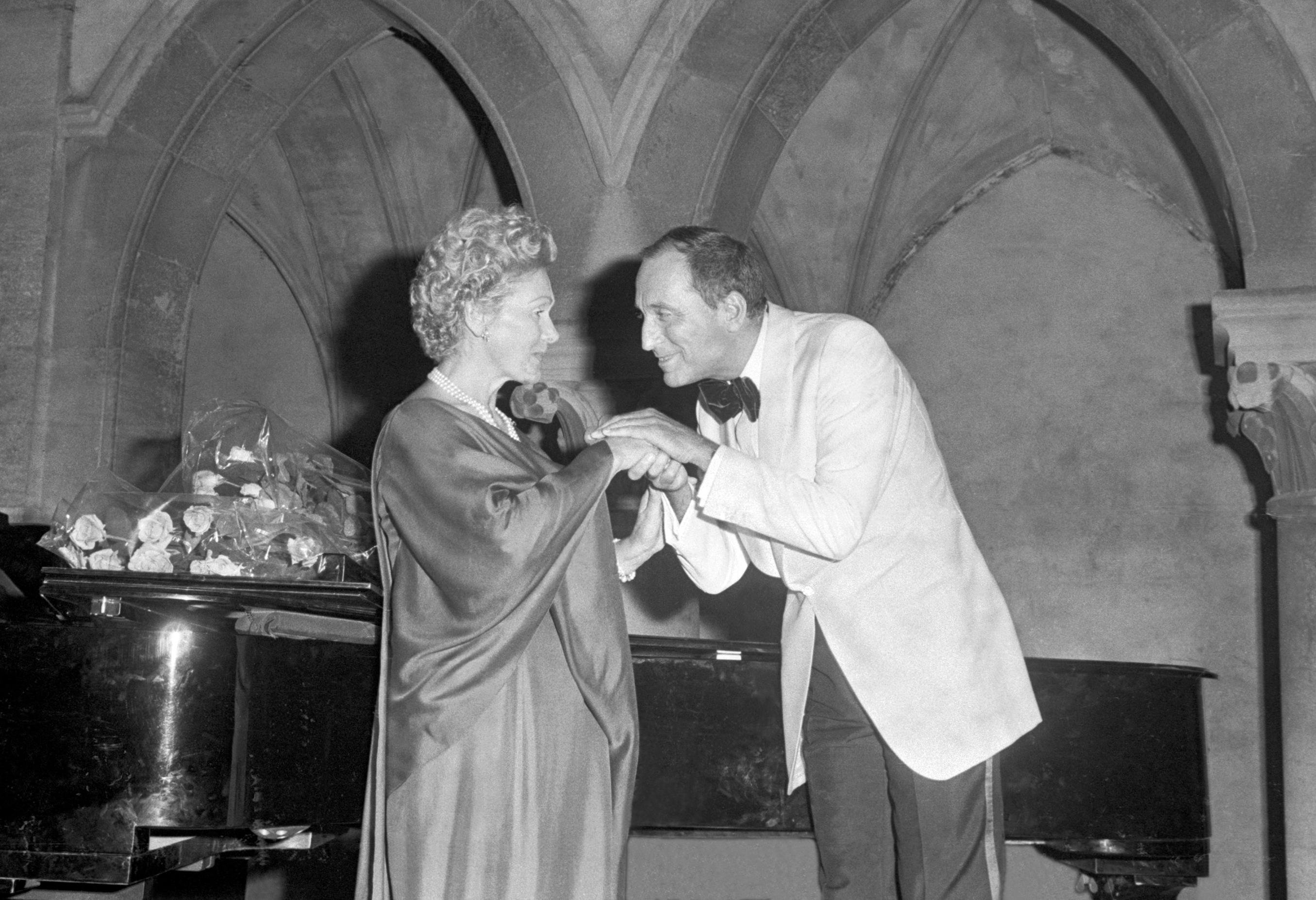
Bernard Lefort et Elisabeth Schwarzkopf, 1974 © Henry Ely

Alcina, 1978 © Henry Ely
1982 > 1996
1982 > 1996
1982 > 1996
1982 > 1996
Appointed to succeed Rolf Liebermann at the head of the Paris Opera, Bernard Lefort handed over the reins to Louis Erlo, director of the Lyon Opera and the Opera Studio of the Paris Opera. Erlo, in a spirit of ‘innovation and faithfulness’ to the Festival’s roots, refocused on the exploration of the Baroque repertoire. Symbolically, he opened his first season with the world premiere of Les Boréades by Rameau (1982): the opera was staged at Aix for the first time, nearly two hundred years after the death of the French composer, in a production staged by Jean-Louis Martinoty. John Eliot Gardiner, William Christie and Christie’s ensemble Les Arts Florissants became regular guests at the Festival, along with their elaborate and enchanting production of Purcell’s The Fairy Queen (1989), Rameau’s Castor et Pollux (1991), and Handel’s Orlando (1993) and his Semele, staged by Robert Carsen in 1996. Mozart once again held a prominent place in the line-up: in addition to better-known titles, Louis Erlo programmed Mitridate, Re di Ponto (1983) and a previously unperformed work, La Finta Giardiniera (1984), further expanding the Festival’s Mozartian repertoire.
Alongside this wealth of works from Baroque and classical music, many pieces of contemporary music likewise found a place: the Festival, in partnership with the contemporary music centre Acanthes, hosted the first and only complete performance of Stockhausen’s Sirius in 1977, followed by the production of George Aperghis’s La Tour de Babel (1986). Claude Prey also premiered his opera Le Rouge et le Noir (1989), after spending several summers in Avignon working on music theatre creations. Finally, the Festival opened its doors to the twentieth-century operatic repertoire, notably with the highly successful production of Britten’s A Midsummer Night’s Dream, staged by R. Carsen (1991), as well as Prokofiev’s The Love for Three Oranges (1989) and Stravinsky’s The Rake’s Progress (1992).
The productions, which became increasingly ambitious in terms of their staging, continued to be performed at the Théâtre de l’Archevêché; the venue was regularly renovated to accommodate larger sets and allow for the development of co-productions. In 1985, the monumental project of building a new theatre (designed by Bernard Guillaumot) required the demolition of the rear wall of the Cour de l’Archevêché, which was rebuilt stone by stone five metres further back.
Aix attracted the greatest singers on the international stage, such as Jessye Norman (Phaedra in Hippolyte et Aricie in 1983), Barbara Hendricks and Samuel Ramey. Finally, the Festival continued its collaboration with painters, who designed posters and programmes for each edition: they included Victor Vasarely, Zao Wou-Ki, Louis Toffoli, Jean Bazaine and Louise Bourgeois.
An event of this scale came with significant costs, and the Festival d’Aix faced a severe financial crisis in the 1990s: after attempting to turn things around by creating a semi-public company (1991), the Festival closed its doors in 1997, in order to renovate the Théatre de l’Archevêché and reorganise a new project for 1998.
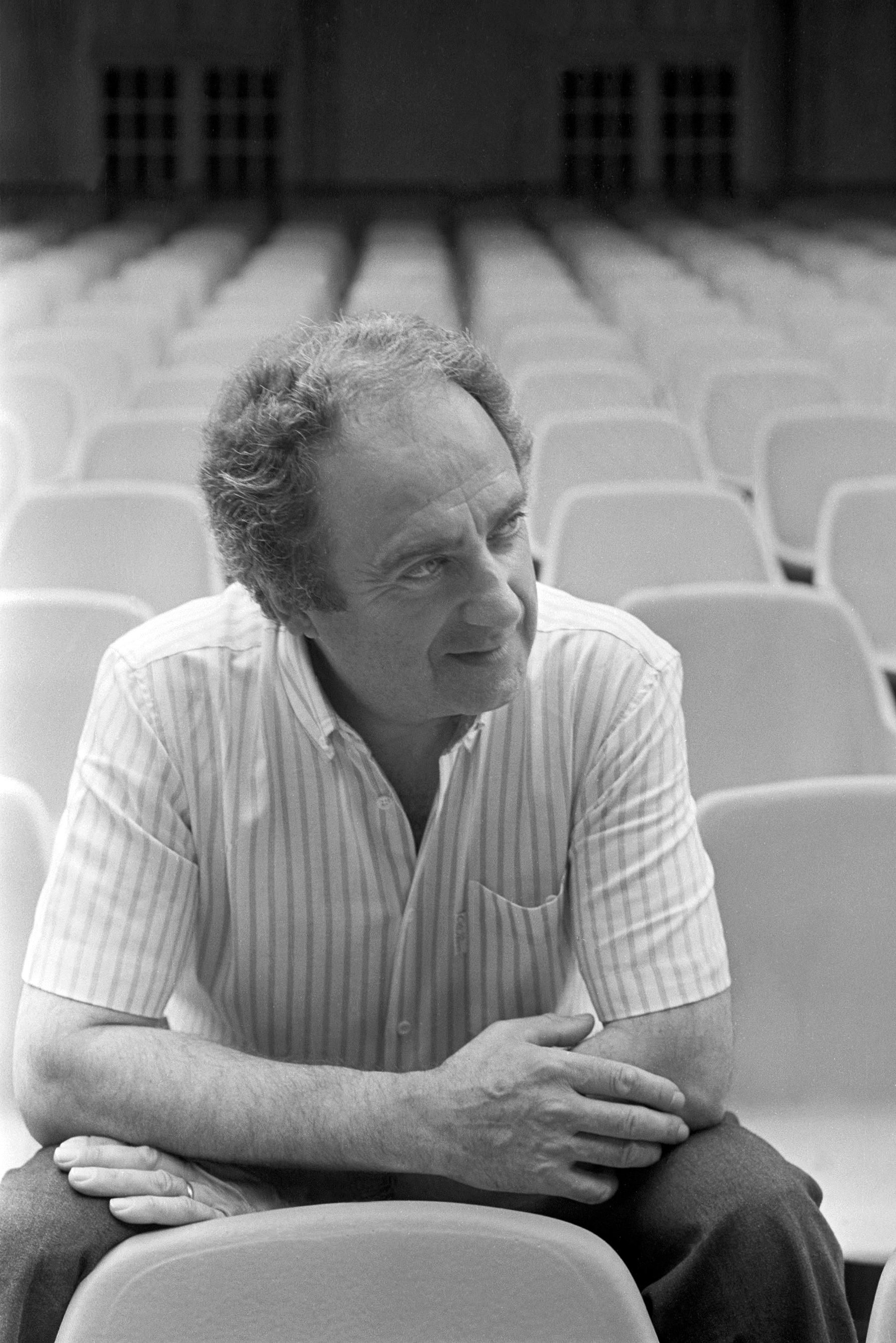
Louis Erlo, 1982 © Henry Ely
1998 > 2006
1998 > 2006
1998 > 2006
1998 > 2006
WITH THE CREATION OF THE ACADÉMIE EUROPÉENNE DE MUSIQUE, A NEW ADVENTURE BEGINS FOR THE FESTIVAL. THE ACADÉMIE WILL HELP FOSTER THE EMERGENCE OF A NEW GENERATION OF ARTISTS WHO HAVE INTEGRATED THE MUSICAL UPHEAVALS OF THE LAST 50 YEARS. IT WILL ENABLE THESE ARTISTS TO TAKE ON THE ENTIRE REPERTOIRE, IRRESPECTIVE OF GENRE. IT WILL BE A PLACE OF DISCOVERY, ENCOUNTERS AND EXCHANGE BETWEEN YOUNG SINGERS, INSTRUMENTALISTS, COMPOSERS AND STAGE DIRECTORS.
Stéphane Lissner
A third era began for the Festival d’Aix in 1998, fifty years after it was founded. The Festival was revived under a new legal structure, heavily supported by various public authorities; Stéphane Lissner served as its director. This man of the theatre, and former director of the Théâtre du Châtelet, transformed the Festival from top to bottom, and elevated it to the level of a fully-fledged production unit, in particular by creating workshops for set and costume production in Venelles.
Now symbolised by the three themes of youth, singing and Mozart, the Festival was reborn, and, with it, the Académie européenne de musique emerged. Since 1998, the Académie has promoted the training of young, top-level singers, instrumentalists and composers. In 1999, for example, the French baritone Stéphane Degout was introduced to audiences in Die Zauberflöte.
A new theatre was built in the courtyard of the Archevêché for the occasion, and the Festival gradually invested in other new spaces. The Théâtre du Jeu de Paume, the former municipal theatre, was renovated, and would host numerous premieres and Baroque repertoire works, such as a Monteverdi cycle led by Les Arts Florissants from 1998 to 2000. The Grand Saint-Jean estate became the go-to space for large-scale opera productions, pending the completion of the Grand Théâtre de Provence, designed by architect Vittorio Gregotti and opened in 2007.
While never forgetting its Mozartian identity and the repertoire that had established its reputation, the Festival inaugurated the Grand Théâtre de Provence with Die Walküre (2007), the second part of the Ring cycle, for which Sir Simon Rattle conducted the Berlin Philharmonic (2006–2009). Mozart remained in the spotlight (the Festival opened in 1998 with Don Giovanni, staged by Peter Brook), as did Benjamin Britten, with, for example, Luc Bondy’s production of The Turn of the Screw (2001).
This new chapter in the Festival’s history kept the tradition established by Gabriel Dussurget alive, as well as his desire to offer a spectacle total (a total, or all-encompassing, performance). Beginning with his very first season, Stéphane Lissner invited Trisha Brown (L’Orfeo, 1998, and, later, Hippolyte et Aricie, 2010), Pina Bausch (Bartók’s Bluebeard’s Castle, 1998) and Anne Teresa de Keersmaeker (Hanjo, 2004), and thus placed contemporary dance at the heart of the inter-artistic dialogue that sometimes arises from operatic creation. Every summer, the biggest names in contemporary staging were present at Aix: Stéphane Braunschweig (The Makropoulos Affair in 2000), Peter Brook (Don Giovanni in 1998) and Klaus Michael Grüber (L’incoronazione di Poppea in 1999, and a tripartite production featuring Boulez, Schoenberg and Stravinsky, with Anja Silja and conducted by Pierre Boulez in 2006), to name a few. Stéphane Lissner also invited Patrice Chéreau to make his return to opera in 2005 for Così fan tutte.
In addition, the Festival became a place of intense musical creation through its many commissions: Yan Maresz’s Festin; Peter Eötvös’s Le Balcon, based on Jean Genet’s play (2002); and, in co-commission with the Théâtre de La Monnaie in Brussels, Toshio Hosokawa’s Hanjo, based on Yukio Mishima’s play (2004), and Philippe Boesmans’s Julie, based on Miss Julie by August Strindberg (2005).
The top-quality orchestral and vocal ensembles and conductors further elevated Aix-en-Provence’s place in the world of opera. Pierre Boulez regularly conducted symphonic ensembles for operatic productions and concerts; and audiences could come to Aix to hear Claudio Abbado (1998), Daniel Harding, Sir Simon Rattle — who conducted Mahler’s Fifth Symphony, with Montagne Sainte-Victoire as a backdrop, in honour of the centenary of Cézanne’s death — Laurence Equilbey (La Cenerentola, 2000), Marc Minkowski (L’incoronazione di Poppea, 1999; and Die Entführung aus dem Serail, 2004) and René Jacobs (L’Orfeo, 1998; Così fan tutte, 2000). It was also at the Festival that the Mahler Chamber Orchestra was founded around Peter Brook’s production of Don Giovanni (1998, reprised in 1999 and 2002), and subsequently performed during numerous concerts and operas.
The 2003 edition was marked by a countrywide strike by workers in the performing arts, which resulted in the cancellation of nearly all performances in Aix and at many other festivals as well. The Festival was hit hard, but resumed operations in the summer of 2004. Appointed to lead the Teatro alla Scala in Milan, Stéphane Lissner left the Festival at the end of the 2006 edition, after having launched the Festival’s first Ring cycle (Das Rheingold at the Théâtre de l’Archevêché), but without inaugurating the Grand Théâtre de Provence — a project for which he had long advocated.
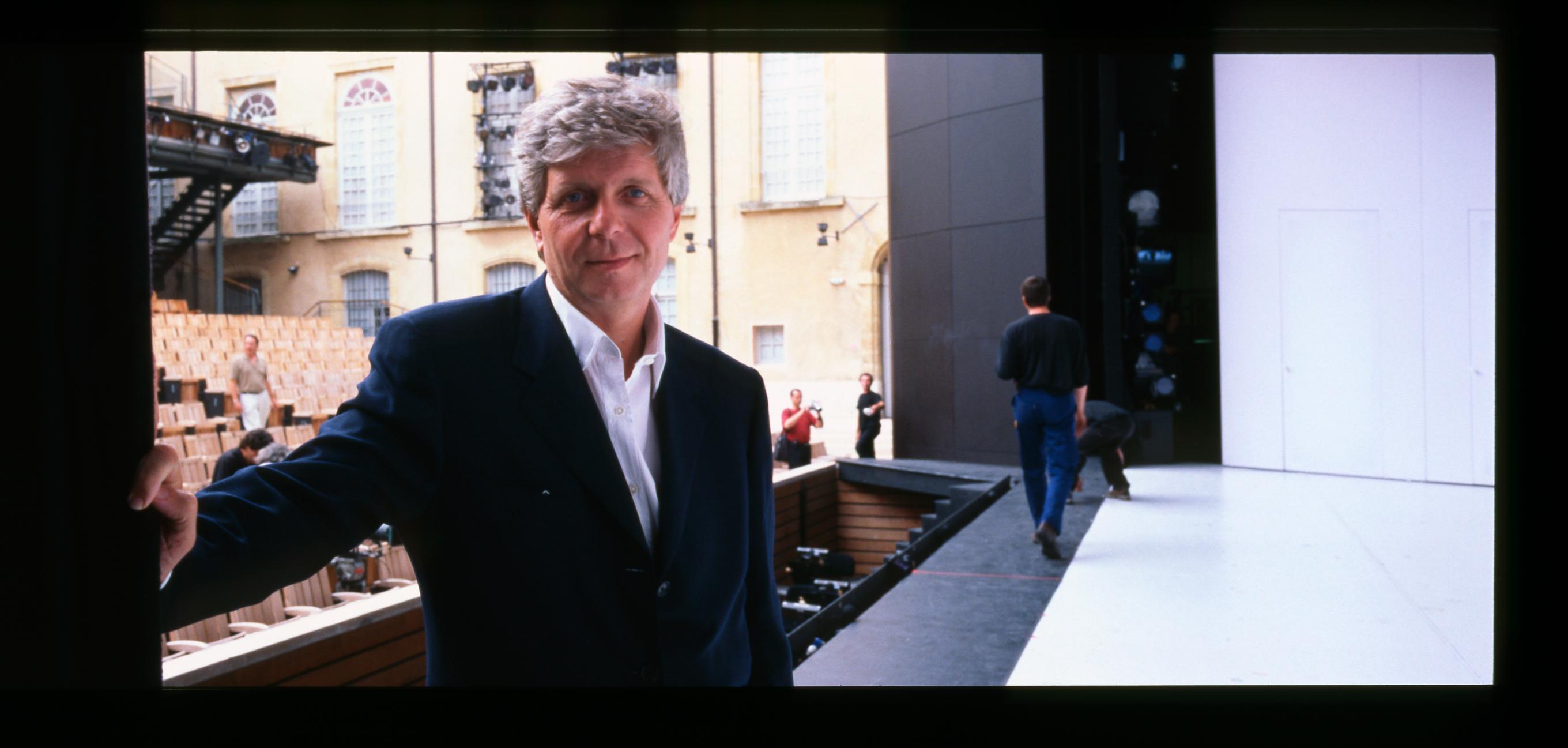
Stéphane Lissner © Elisabeth Carecchio

Don Giovanni de Mozart, mise en scène de Peter Brook
Festival d'Aix-en-Provence 1999 © Elisabeth Carecchio
2007 > 2018
2007 > 2018
2007 > 2018
2007 > 2018
APPEAL TO A VERY WIDE AUDIENCE AND ALLOW IT, THANKS TO THE PERFORMERS' VOICES, TO INTERPRET THE EMERGING WORLD OF TOMORROW.
Bernard Foccroulle
Bernard Foccroulle’s tenure marked a new step in the construction of the Festival d’Aix identity, centred on openness — to both new audiences and new repertoires. B. Foccroulle, the former director of the Théâtre de La Monnaie, strived to keep the Festival d’Aix rooted in its own century and the issues at stake: he was committed to passing on the universal vocation of opera and to forming the audiences of tomorrow. Upon his arrival, he created an ambitious socio-artistic department, Passerelles, to reach out to those individuals with the least access to opera. In 2013, audience access further expanded with the creation of Aix en juin, a prelude to the July Festival that culminated in a large free concert on the Cours Mirabeau, attended by over 5,000 people.
In addition, after contributing to the ‘Marseille-Provence 2013: European Capital of Culture’ project, the Festival extended its focus to the Mediterranean region. It founded the Medinea network and, in 2014, after several years of collaboration, integrated the Orchestre des Jeunes de la Méditerranée (OJM) into the Festival structure. That same year, the Festival d’Aix was named Best Festival at the International Opera Awards in London.
This period also marked the expansion of the Académie’s mission: under the leadership of Émilie Delorme, the Académie continued showcasing some of the greatest singers in the world of contemporary opera (e.g. Julie Fuchs, Sabine Devieilhe, Jakub Józef Orliński), introduced audiences to chamber music ensembles (the Trio Sōra, the Quatuor Zaïde), and committed to helping artists navigate the world of professional opera. Through numerous residencies and workshops, and via enoa (a network opera academies founded in 2009), the Académie supported career development in all professions of operatic creation.
These major initiatives remained connected to the Festival’s excellent and diverse programme. Leading stage directors appeared regularly in Aix: Patrice Chéreau made his return with Janáček’s From the House of the Dead, conducted by P. Boulez (2007), and staged one final production in Aix in 2013 (Elektra), just weeks before his death. Peter Sellars (Zaïde in 2008), Joël Pommerat, William Kentridge (Shostakovich’s The Nose in 2011 and Winterreise in 2014), Olivier Py (Idomeneo, conducted by Marc Minkowski, in 2009), Dmitri Tcherniakov (Don Giovanni in 2010, and Carmen in 2017), and Jean-François Sivadier (La Traviata in 2011 and Don Giovanni in 2017) were all frequent guests. Katie Mitchell, stage director in residence at the Festival (2012–2018) and creator and mentor of the Académie’s Women Opera Makers workshop, left her own mark on the Aix stage, with Written on Skin (by George Benjamin, 2012 — a world premiere), The House Taken Over (by Vasco Mendoça, 2013), Trauernacht (2014), Alcina (2015), Pelléas et Mélisande (2016, revived in 2024) and Ariadne auf Naxos (2018).
Operatic creation was encouraged with sustained intensity and significant resources, leading to the emergence of important contemporary successes, such as Philippe Boesmans’ Pinocchio (2017), and George Benjamin’s Written on Skin (2012), staged by Katie Mitchell, with Barbara Hannigan in the lead role. Alongside these major works, Bernard Foccroulle also supported the development of smaller-scale creations (Pascal Dusapin’s Passion in 2008), chamber operas (Oscar Bianchi’s Thanks to My Eyes, 2011), and original formats (Le Monstre du Labyrinthe, a participatory opera by Jonathan Dove, 2015). In this same spirit, the creation of the opera Kalîla wa Dimna, sung in Arabic and French, with the amateur choir Ibn Zaydoun (2016), combined the will to transform opera into a universal art form with the desire to use it as a platform for intercultural exchange.
Bernard Foccroulle maintained the Festival’s tradition of rediscovering early works. The Théâtre du Jeu de Paume welcomed performances of early Baroque works, such as Elena by Cavalli (2013), revived by Leonardo García Alarcón’s Cappella Mediterranea, and Erismena (2017), by the same composer. Monteverdi remained a central figure, and was joined by a Handel cycle (Ariodante, Alcina and Il trionfo del tempo e del disinganno, 2014-2016). Finally, the summer residencies by the Berliner Philharmoniker (2006-2009), followed by the London Symphony Orchestra (2010-2013) with Sir Simon Rattle, and the frequent presence of the Freiburger Barockorchester and such French conductors as Emmanuelle Haïm, Louis Langrée, Raphaël Pichon and Jérémie Rhorer, all contributed to shaping Aix’s reputation for musical excellence.>
Following three consecutive terms, and a dozen years, as general director of the event, Bernard Foccroulle left Aix-en-Provence in 2018, after celebrating the Festival’s 70th anniversary.
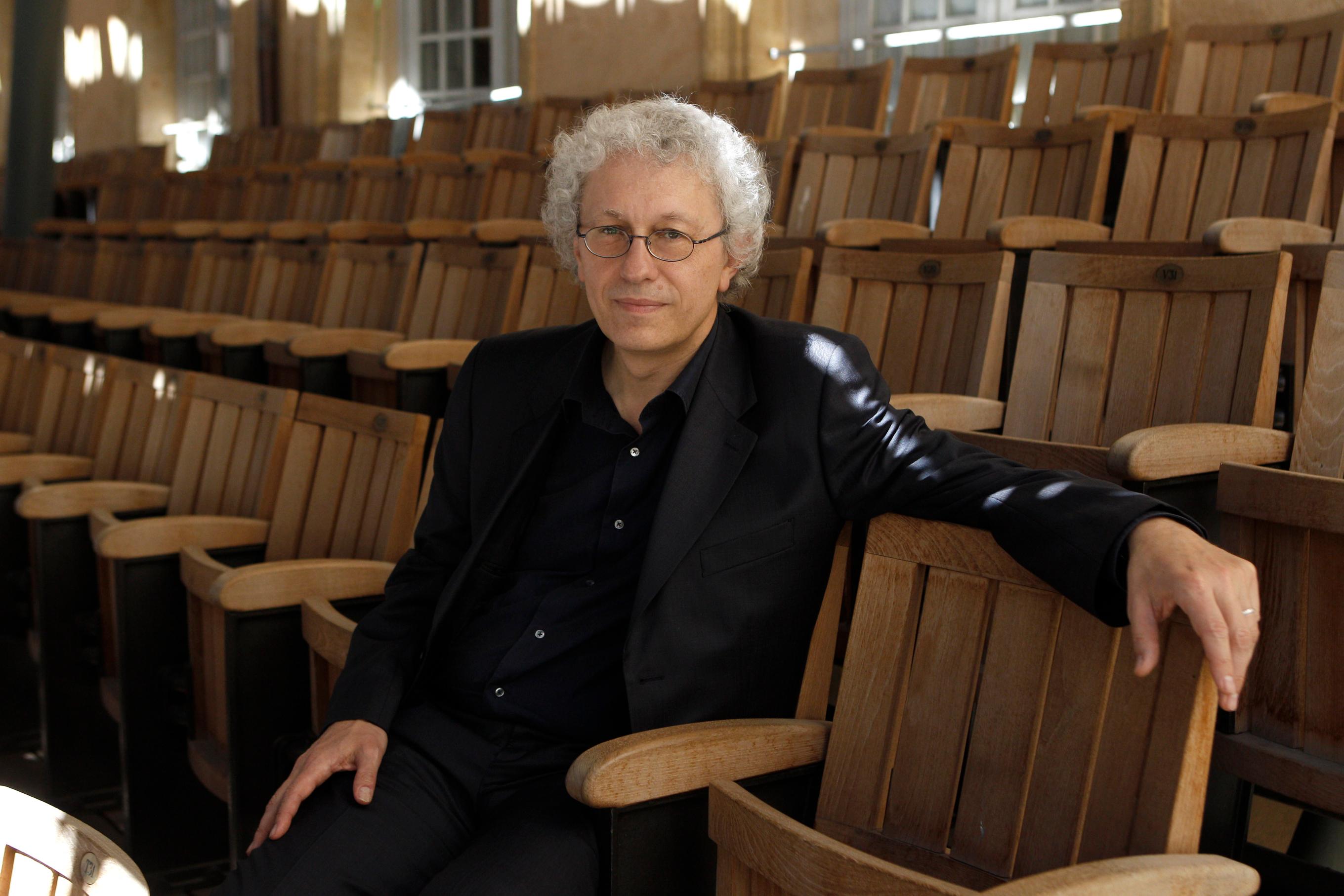
Bernard Foccroulle, 2010 © Pascal Victor

La Traviata – Festival d’Aix-en-Provence 2011 © Pascal Victor
![Parade[s] - Cours Mirabeau - Festival d'Aix-en-Provence 2019](/_next/image?url=https%3A%2F%2Fmedias.festival-aix.com%2Fsites%2Fdefault%2Ffiles%2F2023-01%2Fparades2019-67-2720pxl.jpg&w=3840&q=75)
Parade[s] – Festival d'Aix-en-Provence 2019 © Patrick Berger
Since 2019
Since 2019
Since 2019
Since 2019
The Festival d’Aix is a precious planet in the firmament of the international performing arts.
Pierre Audi
When Pierre Audi was named director of the Festival d’Aix for the 2019 season, his appointment ushered in a new era while still honouring the fundamental qualities that have ensured the Festival’s success since 1948. Pierre Audi has reaffirmed the Festival’s commitment to the vibrancy of opera, despite global challenges due to the COVID-19 crisis, climate change, and the resurgence of war in Europe.
As a leading stage director, Pierre Audi has devoted much of his career to the oeuvres of Monteverdi and Wagner, as well as to twentieth-century works and new productions. Particularly attuned to contemporary art, he has collaborated with numerous visual artists, such as Karel Appel, Georg Baselitz and Anish Kapoor. At the Festival d'Aix, he invites renowned figures in international stage direction — including Lotte de Beer, Andrea Breth, Romeo Castellucci, Barrie Kosky, Simon McBurney and Simon Stone — and rising stars of the new generation, such as Silvia Costa and Ted Huffman.
Attempting to renew opera is not only about offering interpretations based on new dramaturgies; it’s also about shifting the lines in the relationship between the audience, the performers and the content.
Pierre Audi, Lyrik, 2022
Pierre Audi breaks down barriers between the arts and expands the boundaries of opera; he has even made that concept his trademark and implemented it throughout his long career as director of performing arts institutions. At the age of 22, he founded the Almeida Theatre and its Festival of Contemporary Music and Performance in London, which he headed until 1989. He was then appointed artistic director of the Dutch National Opera (1988-2018); while serving as head of that opera company, he also oversaw the Holland Festival (2004-2015) and founded the Opera Forward Festival in 2015, both places of innovation and interdisciplinarity in the world of opera. His predilection for atypical venues and for the festival format became even more apparent when he served as artistic director of the Park Avenue Armory in New York as of 2015, and again when he accepted the same position at the Festival d’Aix-en-Provence in 2019.
Through his original and innovative offerings, Pierre Audi strives to open up the world of opera to a multitude of art forms — in order to break down its barriers and inject it with new life — by staging non-theatrical works; proposing projects that combine music, the visual arts and video; and fostering musical theatre. In 2019, a work by Mozart took centre the stage at the Théâtre de l'Archevêché for the first time since the Festival’s inception — not with an opera production, however, but through Romeo Castellucci’s staging of the Requiem. In 2022, the stage director built upon this approach by staging Mahler’s Symphony No. 2, Resurrection, at the Stadium de Vitrolles, a venue that was reopened for the occasion. Numerous productions and artistic offerings have made the Festival d’Aix a place for interdisciplinarity and for dialogue between the arts, whether it be digital opera, with Blank Out (Michel van der Aa, 2019); a collaboration with the Comédie-Française for The Threepenny Opera (Thomas Ostermeier, 2023); musical theatre (Woman at Point Zero, 2022); or opera and cinema (Rebecca Zlotowski, Bertrand Mandico and Evangelia Kranioti for the Ballets russes, 2023). Moreover, in 2020, the global pandemic led to the creation of the Digital Stage, thus facilitating the development of innovative musical and artistic content.
As a tribute to composer and conductor Pierre Boulez, who has made significant contributions to numerous past editions of the Festival, Pierre Audi has marked his programming through the creation of INCISES, a series of events that showcases contemporary music by spanning the gap between opera and the visual arts. Creation is thus at the heart of the Festival's programming, through its operas (Innocence [Kaija Saariaho] and The Arab Apocalypse [Samir Ohed-Tamini] in 2021; Il Viaggio, Dante [Pascal Dusapin] and Woman at Point Zero [Bushra El-Turk] in 2022; Picture a day like this [George Benjamin] and The Faggots and Their Friends Between Revolutions [Philip Venables] in 2023), its concerts (La natura del mondo [Pascal Dusapin, 2021], Alchymia [Thomas Adès, 2022], Ces belles années… [Betsy Jolas, 2023]) and the many creations that regularly emerge from the residencies and concerts of the Académie and the Mediterranean (e.g. Gamal Abdel-Rahim, João Barradas). In addition, INCISES places the spotlight on contemporary music, routinely programming works by composers of today, such as George Benjamin and Wolfgang Rihm, in its concerts.
Pierre Audi reaffirms the Festival’s tradition of symphonic concerts and chamber music by programming the greatest names in conducting, as well as international orchestras such as Ensemble Pygmalion, the London Symphony Orchestra, Cappella Mediterranea, the Balthasar Neumann Orchestra, the Mahler Chamber Orchestra, and the Orchestre de Paris. He offers a rich programme of operas in concert version, including Norma in 2022; and Otello, Lucie de Lammermoor and Le Prophète in 2023.
Lastly, following in the footsteps of Bernard Foccroulle and carrying on one of the Festival’s long traditions, Pierre Audi has deepened the Festival’s Mediterranean roots. Pierre Audi was born in Beirut, fled the Lebanese civil war to continue his studies in France and England, and then developed his career throughout Europe. He has also contributed to the development of the Festival’s Mediterranean bent by recruiting conductor Duncan Ward as the permanent music director of the Mediterranean Youth Orchestra in 2020 and by pursuing a rich programme of intercultural concerts during Aix en juin and the Festival in July.
Pierre Audi has been renewed for a second term at the helm of the Festival d’Aix as of 2024, and will be implementing an approach aimed to help audiences rediscover and more fully appreciate the Festival’s heritage.
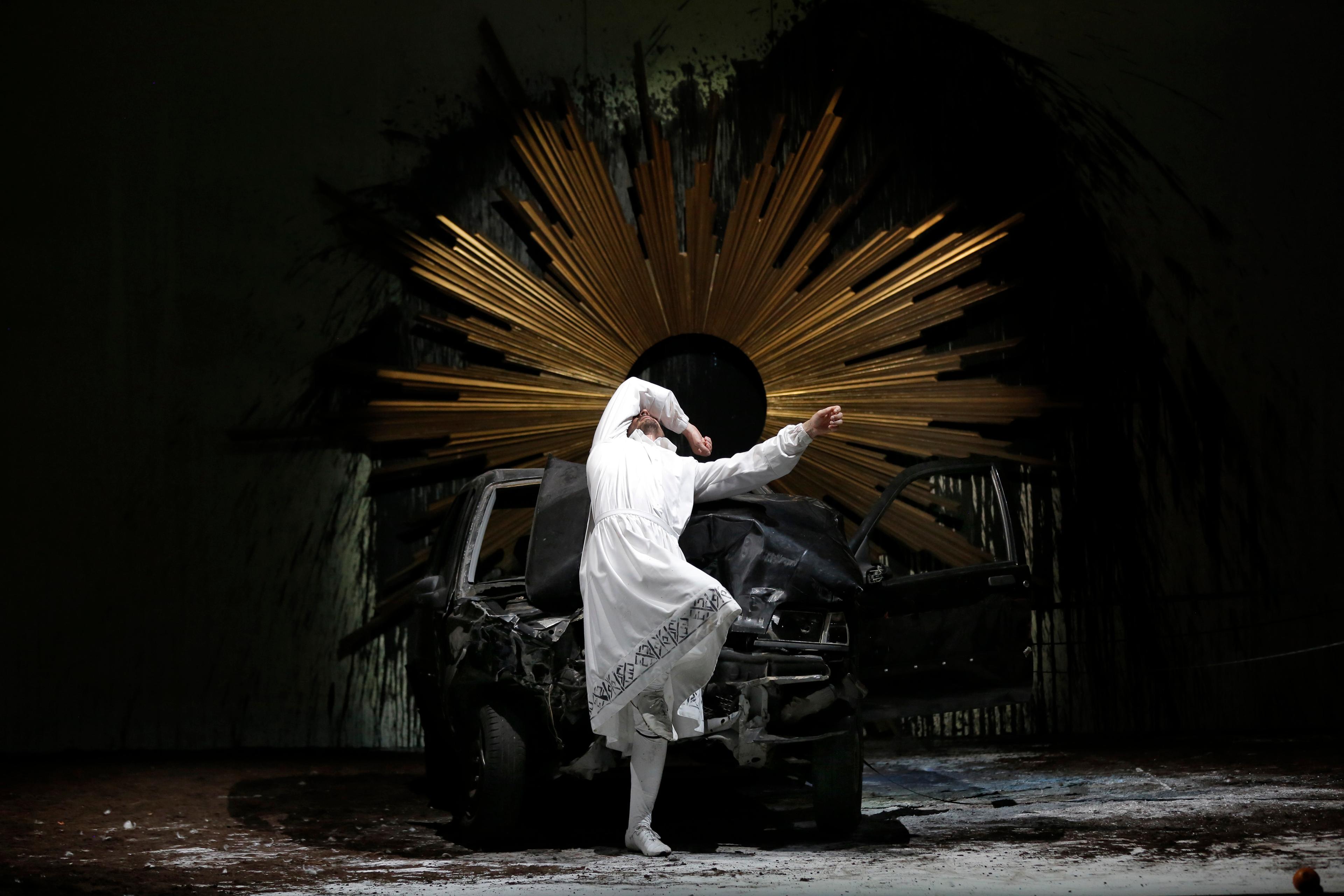
Requiem – Festival d'Aix-en-Provence 2019 © Pascal Victor
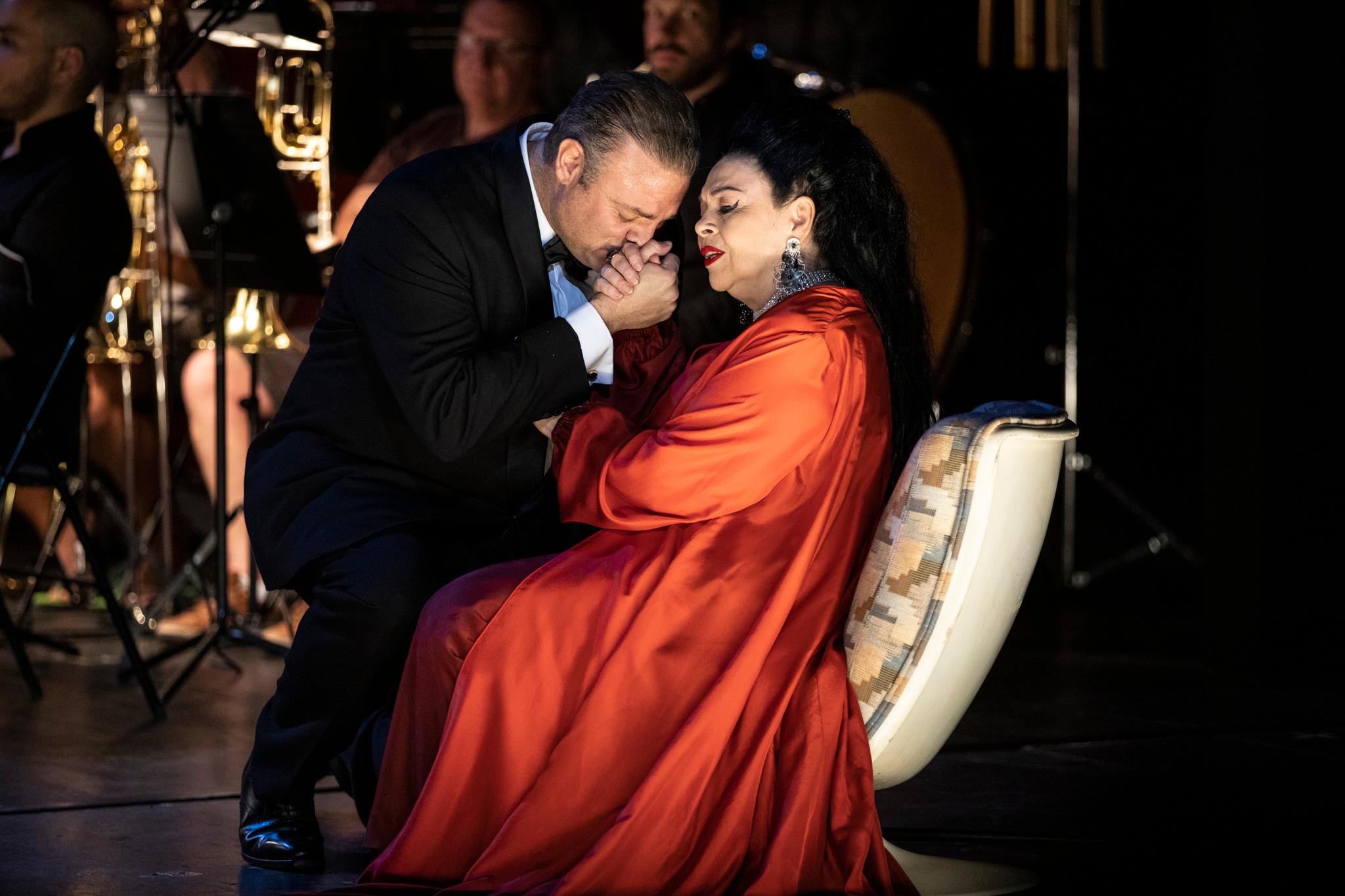
Tosca – Festival d’Aix-en-Provence 2019 © Jean Louis Fernandez
